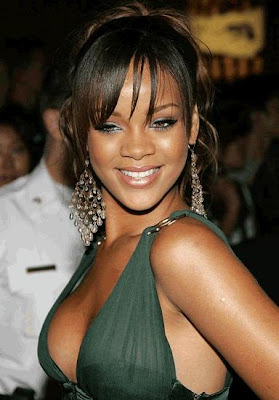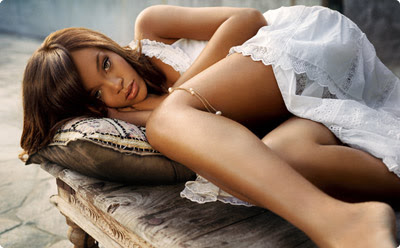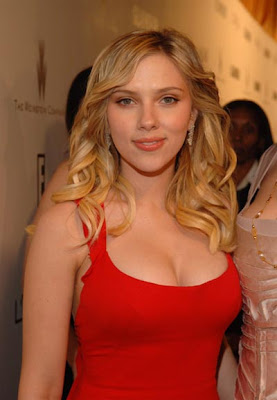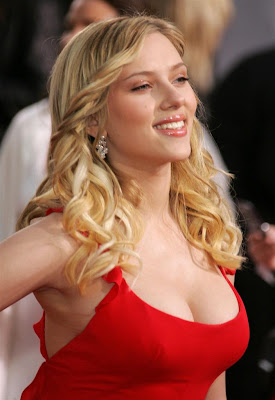Wednesday, December 30, 2009
ELLEN FORBES BURNIE: Running Towards 2010
TRAVEL NOTES: Khyongla Rato Rinpoche
 Richard Gere and Khyongla Rato Rinpoche, with HH the Dalai Lama's senior tutor, Kyabje Ling Rinpoche (embalmed body d. 1983), Dharamsala, India 1988. Photograph (c) Elizabeth Paul Avedon /All Rights Reserved
Richard Gere and Khyongla Rato Rinpoche, with HH the Dalai Lama's senior tutor, Kyabje Ling Rinpoche (embalmed body d. 1983), Dharamsala, India 1988. Photograph (c) Elizabeth Paul Avedon /All Rights ReservedTuesday, December 29, 2009
JOHN F. MARTIN: Portrait of the Opera
Sunday, December 27, 2009
GARRY WINOGRAND: 1974 Podcast
"This is the Garry Winogrand I remember.
Worth listening to all the way through." –Tod Papageorge
LOOKING BACK: Vintage Texas
 Harris County Mounted Sheriff's Posse
Harris County Mounted Sheriff's PosseDowntown Rodeo Parade, Main Street, Houston, Texas 1950's
Photographs (c) Elizabeth Paul /All Rights Reserved
 Harris County Mounted Sheriff's Posse Practice Formations, 1950's
Harris County Mounted Sheriff's Posse Practice Formations, 1950'sPhotographs (c) Elizabeth Paul /All Rights Reserved
 The Salt Grass Trail Riders Assembling
The Salt Grass Trail Riders AssemblingMemorial Drive Country Club grounds, Houston, Texas, 1953 80 riders.
Photographs (c) Elizabeth Paul /All Rights Reserved
The Salt Grass Trail Ride coincides every year with the opening of the Houston Livestock Show and Rodeo. The Trail Ride was first established in 1952 with only 17 riders. By 1959 the ride consisted of more than 90 wagons and over 2000 riders on horseback and is still going strong today.
The Houston Livestock Show and Rodeo, is the world's largest livestock exhibition as well as the richest regular-season PRCA rodeo event, with an average of 2 million attendees a year. This 20 day event is still kicked off by the Downtown Rodeo Parade and traditional Trail Rides arriving in Houston from all over Texas. The Rodeo has drawn music legends Elvis Presley, Roy Rogers, Reba McEntire, Garth Brooks, Willie Nelson, and Lynyrd Skynyrd among so many other Performers.
All Photographs (c) Elizabeth Paul /All Rights Reserved
FLAK PHOTO WEEKEND SERIES TODAY: Conversation With Richard Barnes

Flak Photo | Photography Online | Weekend Series:
"Flak Photo's December Weekend series featured work from Richard Barnes' ANIMAL LOGIC. As part of the project, book designer Elizabeth Avedon Interviewed Barnes in her blog."
"I love the Interview with Richard Barnes...it really broadens an appreciation for the work and gives a real sense about its significance for the artist himself."– Photographer Lisa M. Robinson
And if you missed it: An Interview With Richard Barnes
Saturday, December 26, 2009
Now is the BEST time to buy your 2010 calendar from Rational Animal
If you missed the great party at The Eldridge on December 18th, you missed a great party but not your last opportunity to get a great deal on your copy of Rational Animal's 2010 calendar just in time for the new year!

Rational Animal has seen continued coverage in media for its unique 2010 calendar project, "In Perfect Harmony: Music Legends and their Animals", which pairs vintage rock photography from the archives of the Morrison Hotel Gallery, with Rational Animal's mission for increasing public awareness of at-risk animals.
Founder and Director, Susan Brandt, was interviewd at KLOS radio in on December 9th then with Q104's Shelli Sonstein on December 16th, with an additional mention by the radio station's Ken Dashow on December 24th.
"In Perfect Harmony" was also covered in the December 19th issue of the New York Daily News and in Us Weekly online.
The calendar even made the Rolling Stone online gift guide, which was a tremendous achievement!
Why is NOW the best time to get this one-of-a-kind gift? A promo code has just been opened up to the public. Through December 31st only, use "Q104" at checkout here, www.rational-animal.org/calendar and get 2 for every 1 purchased!

liveBooks STUDENT WEBSITE GIVEAWAY: Milwaukee Institute Photography Class Winner
Photographs (c) Autumn Clark /All Rights Reserved
 Portfolio Winner: Aryn Kresol
Portfolio Winner: Aryn KresolPhotograph (c) Aryn Kresol /All Rights Reserved
What are your top pics and why?
View all 19 students work (click using magnifying glass): Gallery 1, Gallery 2.
+ + +
Kevin Miyazaki is one of those photography teachers we all admire, taking time away from his own work to inspire and instruct his students. His class consists of junior-level photography majors and it addresses the professional world of both fine art and commercial/editorial. They've had a wealth of guest speakers, including Susana Raab, Catherine Edelman (Gallery), Andy Adams (Flak Photo), studio visits with Dave Jordano and Colleen Plumb, trips to the Milwaukee Art Museum and the Haggerty Museum at Marquette University, and visits with studio, wedding and newspaper photographers. Check out the MIAD blog
1. Autumn Clark, 2. Mandie Louiser, 3. Kayla Newman, 4. Sarah Moore, 5. Tom Owens, 6. Aryn Kresol
Thursday, December 24, 2009
SYMBOLS OF PEACE
 Bodhi Leaf, Bodh Gaya, India (c) Elizabeth Avedon
Bodhi Leaf, Bodh Gaya, India (c) Elizabeth Avedon BODHI LEAF
Symbol of Peace And The Ultimate Potential That Lies Within Us All
AN OPEN HEART: Practicing Compassion In Everyday Life + Photographs
 Front Cover Photograph: Clive Arrowsmith
Front Cover Photograph: Clive ArrowsmithBack Cover Photograph: Richard Gere (Courtesy of Fahey/Klein Gallery)
Jacket and Book Design: Elizabeth Avedon
 His Holiness the Fourteenth Dalai Lama
His Holiness the Fourteenth Dalai LamaClive Arrowsmith's b&w photograph I used for the book's cover
Photograph (c) Clive Arrowsmith/All Rights Reserved
AN OPEN HEART: PRACTICING COMPASSION IN EVERYDAY LIFE By His Holiness the Dalai Lama, Edited by Nicholas Vreeland. Afterword by Khyongla Rato Rinpoche and Richard Gere. (Amazon)
Photograph (c) Nicholas Vreeland/All Rights Reserved
By His Holiness the Dalai Lama, Edited by Nicholas Vreeland
Afterword by Khyongla Rato Rinpoche and Richard Gere
Cover Photograph by Clive Arrowsmith
Book Design by Elizabeth Avedon
Buy It on Amazon
Wednesday, December 23, 2009
GUSTAVE LE GRAY 1820-1884: Paris Auction Results
Tuesday, December 22, 2009
Meebo Bar
Now Meebo just release a new product called Meebo Bar. The Meebo bar appears at the bottom of your site and it allows your visitor to sign-in to Meebo and chat with their friends, share pictures and videos and a lot more.
the Meebo Bar allows your site visitors to sign in to Meebo to chat and drag-and-drop to share photos and videos. Now you can also add a slew of new buttons to the Meebo Bar on your site. We've put together a bunch of buttons that we think partners and bloggers might want to make available: a Facebook Fan Page, Twitter, Flickr, YouTube, Lala, Meebo Me, Stumble Upon, Digg, RSS and more! - szeto
Meebo Bar supports TypePad, Blogger, Wordpress, Movable Type. or any self-hosted site.
Sunday, December 20, 2009
Saturday, December 19, 2009
AN INTERVIEW WITH RICHARD BARNES
 FLAK PHOTO WEEKEND SERIES: Richard Barnes ANIMAL LOGIC
FLAK PHOTO WEEKEND SERIES: Richard Barnes ANIMAL LOGICElizabeth Avedon: We met briefly at PhotoPlusExpo 2009 this past October. Were you giving a talk or a seminar there?
Richard Barnes: I was at PhotoPlus to meet with Rixon Reed of Photo-Eye Books and Gallery out of Santa Fe, NM. We were discussing a limited edition artist book he’s proposed we do together on my work, which I’m excited about.
EA: I'm curious to know how you got started in Photography. What were your first experiences?
I have to say however that the experience of working in Journalism taught me a lot about the importance of access and taking what might seem an ordinary assignment and turning it into something larger and more personal. This early experience working in the trenches of day in, day out assignment work actually prepared me for the commissions I receive today from such publications as the New York Times Magazine and National Geographic.
EA: I read in your bio that in 1995 you were commissioned by the NEA to document the renovation of The California Palace of the Legion of Honor as it was discovered the museum had been built upon what was once the largest post-gold rush era cemetery ever excavated.
RB: Actually the Fine Arts Museums of San Francisco applied for and received an NEA grant to commission me to photograph the excavation for new galleries and the renovation of the California Palace of the Legion of Honor, out of which I created the exhibition, “Still Rooms & Excavations”. This installation examined the role of the Legion of Honor in particular, and by extension all museums and the role they play in curating and preserving the past.
During the initial phase of the renovation it was discovered that the museum was built upon a preexisting gold rush era cemetery. Hundreds of burials were excavated from beneath its foundations. I worked at the site for 2 years, watching as the museum lavished great care and concern on the collection and the newly renovated building, as the human burials were simply tossed into cardboard boxes and sent away. This caused me to question the role of the Museum in deciding whose past was important and worth saving, and whose was expendable and considered of little or no value. This body of work was the first I did that examines the cultural role of the museum and the practice of collection, curation and display. Since then this has been a key theme in all my work. A selection of images from “Still Rooms & Excavations” will open in January, at San Francisco Camerawork in an exhibition titled “The Future Lasts Forever”.
EA: How pivotal was the National Endowment for the Arts commission to the evolution of your future work (or future voice) as an artist? Hypothetically would your work have taken a different path if you had not won a grant for that project?
EA: How would you describe your work in ANIMAL LOGIC?
RB: First, a little history. Animal Logic evolved over the past decade and grows out of work first started in the early 1990s when I worked as the excavation photographer at a place called Abydos, Egypt. I had traveled to Egypt with a former professor of mine who had worked there in the 1960s. He was a wonderful guide to the history and culture of the Middle East and I resolved that I would return as soon as I could find a way back. It took four years until I landed a position as the photographer with archaeologists on the Joint Yale/University of Pennsylvania excavations at Abydos.
My interest in archaeology is two fold. On the one hand I have long been interested in the layering of history and memory which is visually expressed through stratigraphy; the building up over time of layers of sediment containing the artifacts and refuge of cultures which have risen and fallen over thousands of years. Archaeological practice has been used both as metaphor and myth by many artists who inspire me, such as Michael Heizer, and Anselm Kiefer and in some cases as direct practice, as in the work of Mark Dion. I also enjoy working with scientists and experts from disciplines outside of my own field. I have learned much over the past 15 years by associating not only with archaeologists but also with anthropologists, ornithologists, taxidermists and most recently, paleontologists.
It was at Abydos that I photographed my first animal mummy. A dog, probably someone’s pet, no doubt buried with it’s master and destined to spend eternity in loyal service to him in the afterlife. That is until we came on the scene and uncovered them some 3000 years after they’d been buried originally.
After a few field seasons in Egypt, I began to turn my attention to the places where the objects we were extracting from the ground were ultimately interred. Working first in the Egyptian Museum in Cairo, I later became interested in how museum collections develop, specifically in the way they express our relationship to the natural world and our place, or the human presence within it. I then started to look at the evolution of the natural history museum as an embodiment of the process of collection, curation and display. These enquiries formed the basis for my book and exhibition, Animal Logic.
EA: How did you arrange to work behind the scenes in the museums in these photographs?
RB: Over the years I have photographed in numerous museums and collecting institutions, therefore it’s not difficult for me to figure out who to contact and more often than not, obtain access to photograph. Natural history museums are much more open to inviting artists in to work with their collections than let’s say a modern art museum. I have also done photography for several books on various art museums and that makes it easier, as I have a portfolio I can present to them. That’s not to say I haven’t been shut down on occasion. The English are particularly difficult to work with and the French just the opposite. There is this wonderful spirit in France; some might even call it quaint, whereby the artist, based solely on an interest in doing research, is granted access. It was great to work over there.
EA: Are the photographs in your Animal Logic series meant to be carefully composed?
RB: The composition of my images comes from my response to the order and attention to detail that the archaeologists, curators and technicians bring to a given subject. Of course I, as the photographer, ultimately compose the scene to express the idea I want to convey. There are images, such as the suspended giraffe in Animal Logic that I just happened upon. The technicians doing the removal were hovering around trying to figure out the best way to get the giraffe out the door. I first photographed it with all of them hoisting it in the air and measuring the doorway, etc., then I asked if they might give me a few minutes with it without anyone around. They decided it was good time to take coffee break and left me with this powerful, if forlorn scene. Ultimately the single image with the giraffe alone and suspended turned out to be the stronger. (Giraffe here)
EA: How much research did you do prior to approaching the dioramas?
RB: I look for dioramas and natural history museums for that matter, which are undergoing renovation. I would find out from curators and exhibition designers which museums they knew of that were upgrading their dioramas, or in some cases getting rid of them all together and contact them. It’s a sad fact but many, thankfully not all, of the museum professionals I talked to were embarrassed by the fact they had these moldering dioramas within their domain. They represent a different era for many institutions and either required substantial “upgrading” or being replaced all together. They certainly had good reasons, not the least of which is that the early dioramas and the animals within were made with lot’s of questionable materials and chemicals know to be toxic to humans. I often felt like I was an emissary from another century documenting these “ancient” theatrical set pieces for posterity.
EA: What historical implications do you feel this body of work possesses?
RB: As far as the historical dimension of this work I personally have always been interested in the theatre and what happens behind the scene or in the wings during a performance. “The Dresser” and “Rosencrantz and Guildenstern are Dead” are two of my favorite plays. In the theatre, the audience enters into this implicit bargain with the actors, director and set designer, in which they are asked to “suspend their sense of disbelieve”, for the duration of the performance. It can be a very powerful experience, especially if it is well executed. It is this idea of “suspending disbelief” that one is also asked to do in front of a diorama.



































